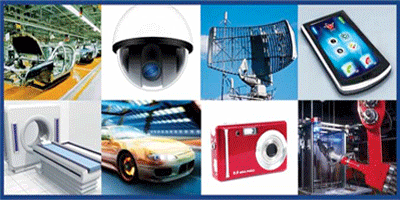
Last May, several leading technology firms got together in Oakland, USA, to form the Embedded Vision Alliance (EVA). The initiative’s motto: To enable “machines that see!” This concept generally refers to machines that understand their environment through visual means.
Till April 25th this year, the Alliance had a membership of 20 companies. These included AMD, Analog Devices, Apical, Avnet Electronics Marketing, BDTI, CEVA, CogniMem, CogniVue, eyeSight, Freescale, IMS Research, Intel, MathWorks, Maxim Integrated Products, NVIDIA, National Instruments, Omek Interactive, Texas Instruments, Tokyo Electron Device and Xilinx.
First, what is embedded vision? It is said to be the merging of two technologies—embedded systems and computer vision (sometimes referred to as machine vision). An embedded system is any microprocessor-based system that isn’t a general-purpose computer. Embedded systems are ubiquitous, and found in automobiles, kitchen appliances, consumer electronics devices, medical equipment, etc. Jeff Bier, president, Berkeley Design Technology (BDTI), and founder, EVA, is of the opinion that vision technologies could add valuable capabilities to electronic products.
[stextbox id=”info”]Over the next few years, there will be a rapid proliferation of embedded vision technology into many kinds of embedded systems. Some of the key sectors worth looking up are retail, entertainment and medical[/stextbox]
Computer vision is the use of digital processing and intelligent algorithms to interpret meaning from images or video. Today, a major transformation is underway. Due to the emergence of very powerful, low-cost and energy-efficientprocessors, it has become possible to incorporate vision capabilities in a range of embedded systems.
EVA points to the example of the Microsoft Kinect video game controller that uses embedded vision to track movements of Xbox 360 users, rather than requiring handheld controllers. Over the next few years, there will be a rapid proliferation of embedded vision technology into many kinds of embedded systems. Some of the key sectors worth looking up are retail, entertainment and medical.
Adding vision to electronics products
Brian Dipert, senior analyst, Berkeley Design Technology, noted, “The members of the Embedded Vision Alliance certainly believe that “vision technologies can add value capabilities to electronic products”.”
The following are some interesting case studies:
1. A ‘smart’ surveillance system that analyses the area in front of its cameras and captures footage only when particular situations arise, such as motion is detected (perhaps only that of human beings). Such a system could also automatically alert its owner to the potential problem situation via e-mail, text message, etc. One example could be a system that constantly monitors a swimming pool and sounds an alarm if it detects people struggling and in the danger of drowning.
2. Automotive driver assistance systems that, for example, alert the driver to an impending collision with objects ahead and even automatically slam on the brakes or take other evasive action. The system could also inform the driver about important warning or other signs on the roadway ahead or on either side of the vehicle. It could even signal when the driver is about to make an unintended lane transition due to lack of attention and take over the steering wheel to correct the lane change.
3. Facial recognition systems that automatically ‘unlock’ a smartphone and load particular account settings when they recognise the person in front of the camera lens.
[stextbox id=”info”]Tom Hackenberg, Semiconductors, IMS Research, forecasts the total market for embedded vision applications to grow from less than 15 million units in 2011 to over 60 million units in 2016[/stextbox]
4. Gesture interfaces like that in the Microsoft Kinect for the Xbox 360, which give a simpler and more intuitive interactive experience for users of a variety of equipment, not just gaming consoles.
5. Medical instrumentation that automatically senses and logs respiration rate, heart rate and other vital parameters, and also analyses X-ray and other images for anomalies, helping physicians in diagnosis of the disorders.
6. Manufacturing-line automated control and defect analysis equipment, formerly implemented using dedicated high-end workstation computers and operating systems but now possible in much simpler, more rugged, compact and inexpensive forms.
Smart surveillance systems are already on their way. There are certain wireless-based security cameras that are designed for remotely monitoring the house and alert the user to potential emergencies via e-mail, text message and so on. Gaming devices such as the Wii and Microsoft Xbox Kinect also use embedded vision. A few electronic devices incorporate facial recognition systems to identify the persons using them. There are certain medical devices as well that can see and sense!
Embedded vision finds applications in diverse fieldsincluding automotive safety, machine vision, military and aerospace, and so on.
Tom Hackenberg, Semiconductors, IMS Research, forecasts the total market for embedded vision applications, including automotive safety and driver assistance, machine vision, security, military and aerospace, gesture recognition, digital signage and augmented reality usage, to grow from less than 15 million units in 2011 to over 60 million units in 2016.






